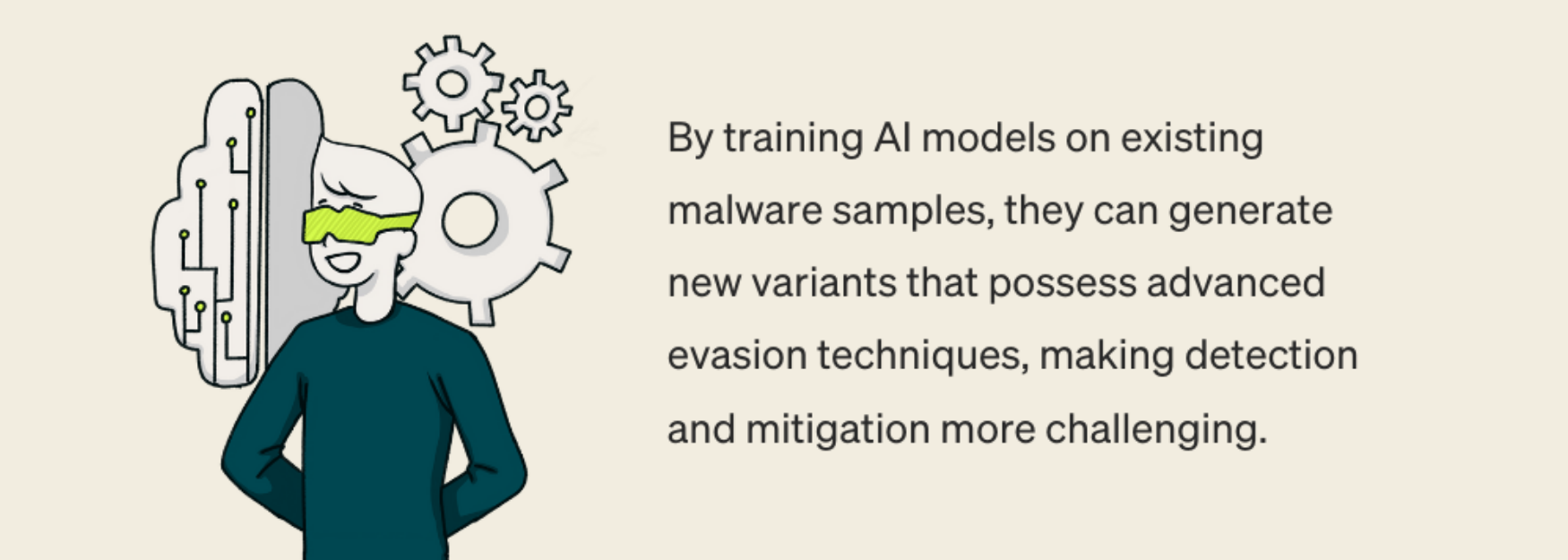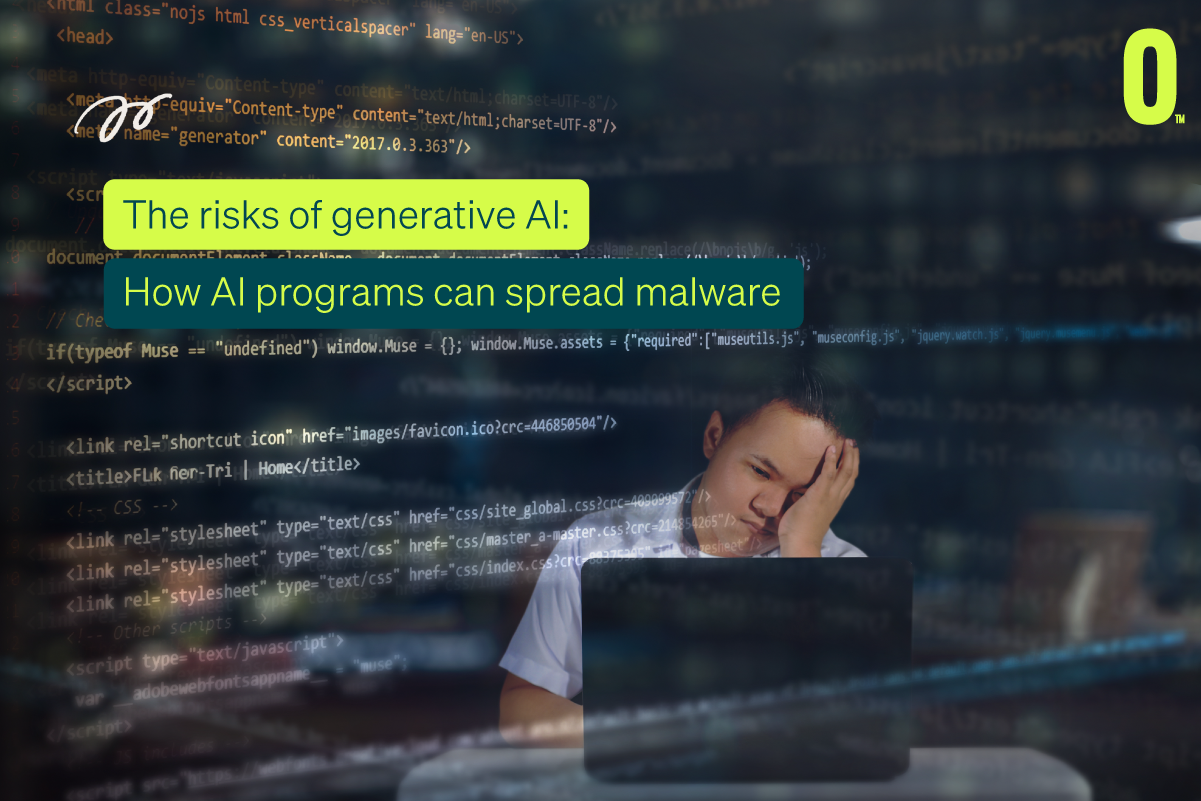Artificial Intelligence (AI) has revolutionised various industries in so many incredible and useful ways, but like any powerful technology, it can also be exploited for malicious purposes. Generative AI, a branch of AI that creates new content based on existing data, is no exception. While generative AI programs have the potential to generate incredible artwork, music, and even written content, they also pose a significant risk when it comes to spreading malware!
Social engineering and phishing get more sophisticated with AI
Generative AI programs leverage deep learning algorithms to analyse and learn from vast amounts of data. This allows them to generate new content that closely resembles human-created work. This is significant because many phishing attacks and security threats heavily rely on social engineering, tricking users into giving them their passwords, financial details, or sensitive data.

We all know the conventional scam email well, so let’s take that as an example. Typically, it contains glaring grammar and spelling errors—errors that the latest generation of AI models, as highlighted in a recent Europol report, no longer make.
So, using generative AI, it’s easier than ever for hackers to create of persuasive, convincingly authentic text for these kinds of scams, with none of the common indicators that would usually make us suspicious!
At the same time, generative AI can be used to create convincing phishing emails and malicious websites. By analysing legitimate emails or websites, AI algorithms can mimic their structure, language, and design, making it difficult for users to distinguish them from authentic ones. This increases the likelihood of unsuspecting individuals falling victim to phishing attacks or unknowingly downloading malware-infected files
Furthermore, using this technology’s learning capabilities, these scam emails can then be continuously adjusted, enhanced, and tailored to specific target audiences. So, it’s not just your non-tech-savvy gran that at high risk – it’s all of us.
Just how sophisticated can generative AI get? Can it create malware?
One of the primary concerns is the creation of AI-generated malware. Hackers can use generative AI algorithms to develop sophisticated malware that can evade traditional security measures. By training AI models on existing malware samples, they can generate new variants that possess advanced evasion techniques, making detection and mitigation more challenging.

Another concern is the use of generative AI in developing “deepfake malware”. Deepfake technology uses AI algorithms to manipulate images, videos, or audio, making it appear as if someone said or did something they didn’t. By combining deepfake technology with malware, hackers can create convincing social engineering attacks.
For example, they could generate a fake video message from a company executive instructing employees to download a seemingly harmless file that is, in reality, malware.
How to prevent the spread of malware through generative AI
Generative AI is only in its infancy – and yet it’s already been a game-changer for malicious actors! As a result, it is absolutely crucial for businesses to get ahead of this cybersecurity threat.
Here are some key measures you should take:
- Enhanced cybersecurity measures: Traditional security solutions should be updated to account for the evolving threat landscape, incorporating AI-powered detection techniques that can identify AI-generated malware and phishing attempts.
- User education:All your team members should be educated about the risks associated with generative AI and taught how to identify potential threats. Recognising red flags, such as suspicious emails or websites, will help them avoid falling victim to AI-generated malware.
- Using an ISO27001 certified IT partner: Partnering with an ISO27001 certified Managed Service Provider (MSP) can offer significant advantages in safeguarding against generative AI attacks and ensuring top-notch cybersecurity at an affordable cost. We follow rigorous security practices and has expertise in identifying and mitigating emerging threats, including those posed by generative AI. We can deploy advanced AI-driven security solutions, provide staff training, continuously monitor for suspicious activities, and provide timely incident response. With our specialised knowledge and experience, we can proactively assess and fortify your organisation’s defences against AI-generated malware, phishing attempts, and deepfake threats.
Affordable cybersecurity solutions for all industries
Generative AI has immense potential for positive applications, but its misuse in spreading malware is a growing concern. By outsourcing your cybersecurity needs to an MSP, you can access the highest levels of protection without the need for extensive in-house resources, making it a cost-effective and reliable solution for businesses of all sizes. We’ll empower you by identifying the risks, implementing advanced security measures, and promoting user awareness, mitigating the threats posed by generative AI and ensure a safer digital environment for all.



